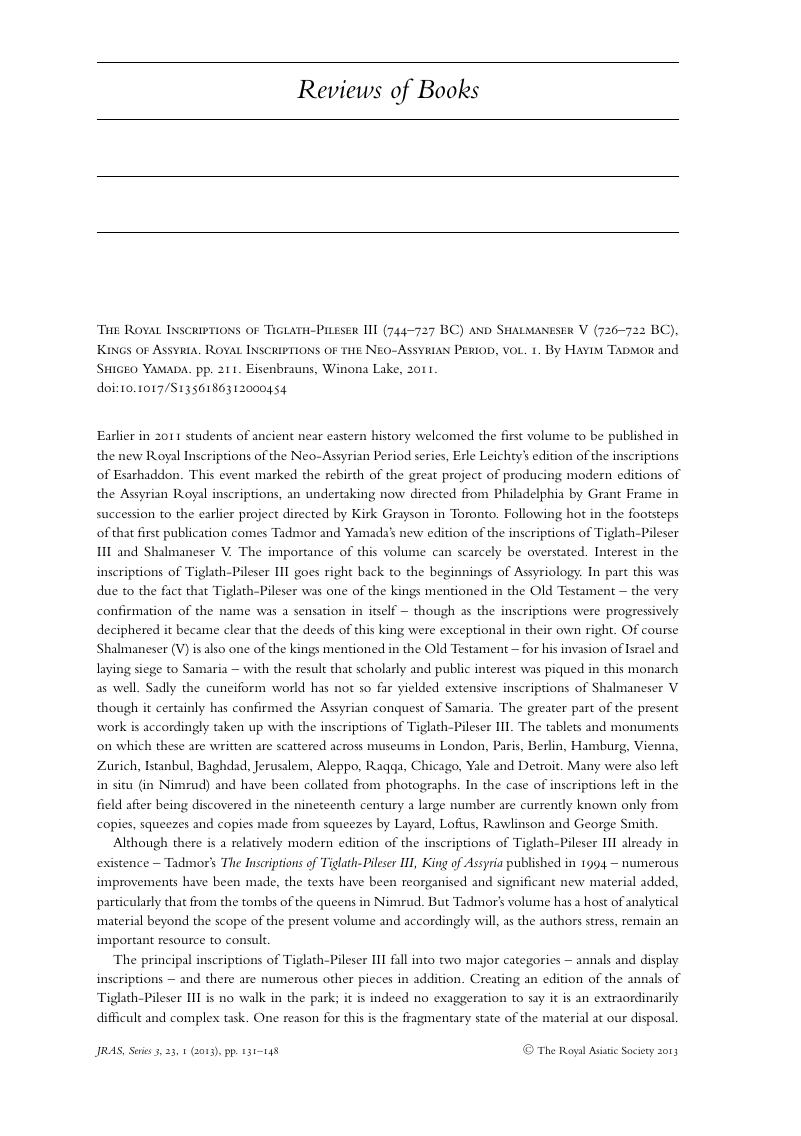No CrossRef data available.
Published online by Cambridge University Press: 17 April 2013

1 Note that KUR ú-pa-a also occurs on the glazed brick panel from the Temple of Andrae, Assur W Farbige Keramik aus Assur und ihre Vorstufen in altassyrischen Wandmalereien (Berlin, 1923) pl.VIGoogle Scholar.
2 Note that Tadmor also identified one of the panels bearing the 12-line version of the Annals as depicting the submission of the king of Unqu: Tadmor Inscriptions Figure 12, giving a drawing of R D Barnett & M Falkner The Sculptures of Tiglath-Pileser (745–727 BC) (1962) Relief 34 (Plates LXXXIX and XCV).
3 Kwasman, T, “A Neo-Assyrian Royal Funerary Text” in Luukko, M, Svärd, S & Mattila, R (eds.) Of God(s), Trees, Kings and Scholars, Neo-Assyrian and Related Studies in Honour of Simo Parpola (Helsinki), p. 117 ii.12’ (and cf. p. 121)Google Scholar.